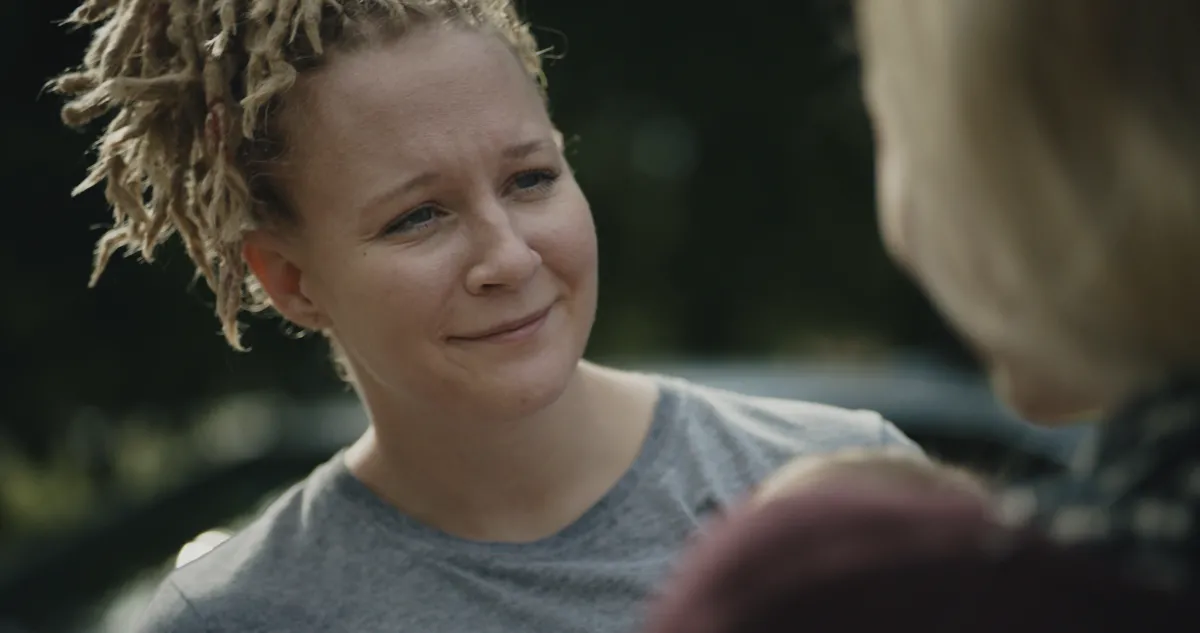

Film still from Reality Winner, of Reality Winner reuniting with her family after being released from prison. Image credit: E.J. Enríquez
Documentary is happy to debut an exclusive clip from Sonia Kennebeck’s latest documentary Reality Winner, which will open at Laemmle Royal and NoHo in LA for special preview screenings on Wednesday, October 18, followed by a weeklong run at Laemmle Glendale. Grasshopper Film will release the film on streaming VOD starting October 31.
Reality Winner, on the prosecution of former NSA translator Reality Winner for leaking a Russian election hacking document to the Intercept, is an investigative film five years in the making. Following a SXSW world premiere and subsequent festival run in 2021 under the title United States vs. Reality Winner, Kennebeck and producer Ines Hofmann Kanna ran a successful Kickstarter campaign with 535 backers to raise funds to completely re-edit the film upon Winner’s release from prison.
On the clip, Kennebeck says, “The scene in the clip was filmed on the one-year anniversary of Reality’s arrest. Her mother, Billie Winner-Davis, had organized a candlelight vigil for her outside the county jail where she was detained. It was a surprise for Reality and meant to show her that she was not alone. It was the first time that a larger group of supporters and media outlets showed up for an event. It was extremely harsh and unusual that Reality was held in pretrial detention for such a long time. She had only disclosed one single document about election interference and had no criminal record. Yet, the prosecution was adamant about keeping her in jail and the judge repeatedly denied her bail. In this scene, Billie is giving a local TV interview, and is asked the question everyone is interested in.”
Reality Winner was supported in part by IDA’s Pare Lorentz Documentary Fund.